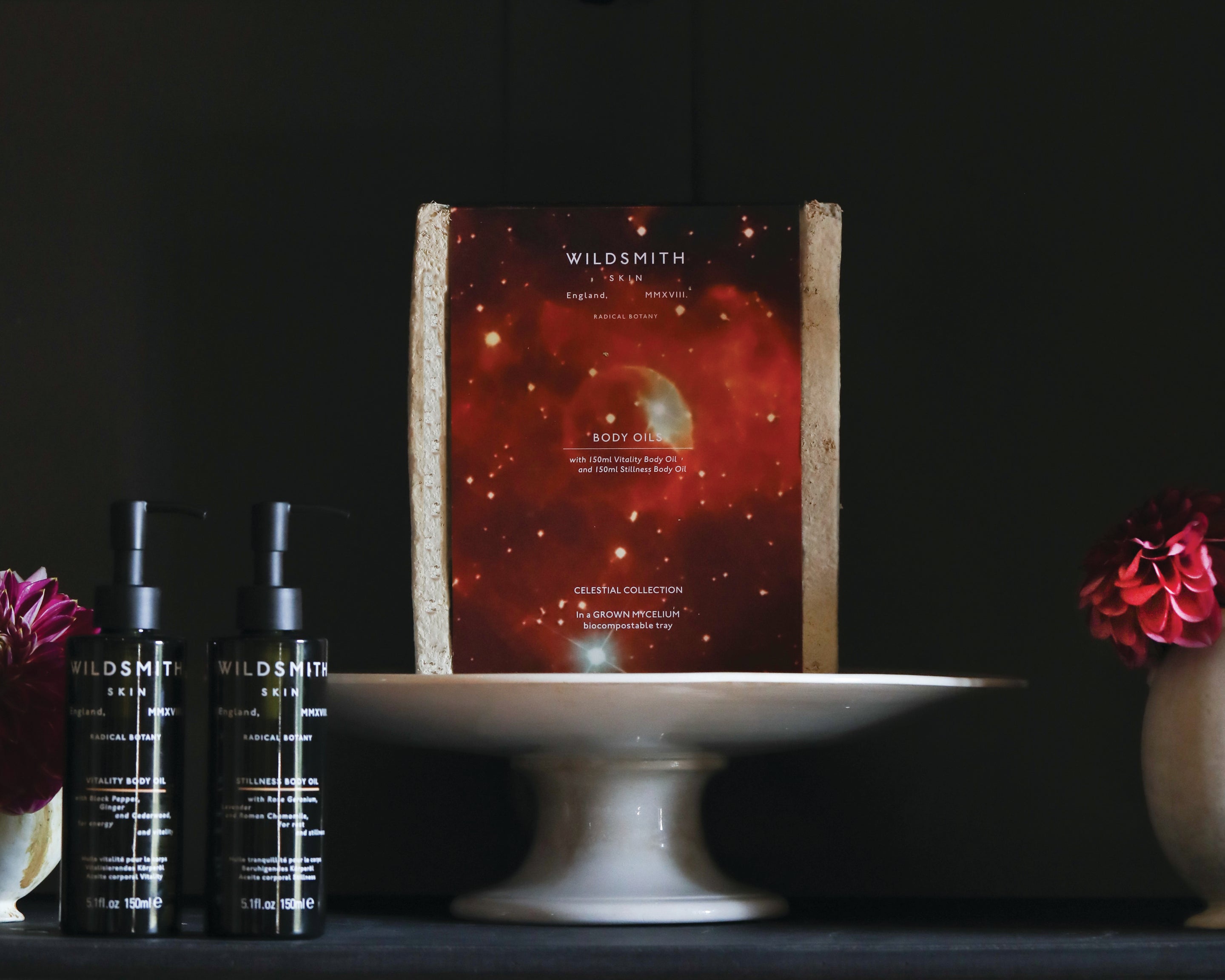Launched earlier this week the Wildsmith Skin Celestial Collection is a celebration of the night sky and wonder of the constellations.
And when considering how to bring this celebration to life our creative team were focussed on seeking out British astrophotographers whose work truly conveyed the magnificence of the sky above us and were delighted when Mary McIntyre and Alex Bell agreed to partner with us on this endeavour.
To mark its launch we sat down with Mary and Alex to learn more about the stories behind their work.
Introducing Astrophotographer, Mary McIntyre
Observing from Oxfordshire, Mary’s passion for astronomy was re-ignited following an accident that left her unable to work for a number of years. Now a keen astrophotographer, Mary’s work and writing has been published in numerous astronomy magazines, books, local and national newspapers, and on various tv shows. In March 2018 Mary was elected as a Fellow of the Royal Astronomical Society and is also a member of the British Astronomical Association, the Society for Popular Astronomy and the Society for the History of Astronomy. In 2021 Mary was awarded the Sir Patrick Moore prize by the British Astronomical Association for my contributions to astronomy outreach.
Mary’s pieces The Waxing Crescent Moon and The Bubble Nebula were selected for our BioCompostable Hand Wash and Lotion and Body Oils collections.
The Waxing Crescent Moon
The WAXING CRESCENT MOON shows the Moon a couple of days into the new lunar cycle, photographed in a twilight sky. Only 7% of the Moon was illuminated by the Sun, but if if you take a long exposure photo of a Crescent Moon it shows the rest of the lunar surface faintly illuminated by light that is reflecting off the surface of the Earth. This effect is known as “earthshine” and it’s something you can faintly see with the naked eye and binoculars. It shows up really well in photos and it’s one of my favourite things to image.
The BUBBLE NEBULA is made up of lots of gas and particles of dust, and is actually the remnant of a supernova
The Bubble Nebula
The BUBBLE NEBULA is made up of lots of gas and particles of dust, and is actually the remnant of a supernova, i.e. a massive star that exploded at the end of its life. When a star explodes it throws off a huge “shell ” of dust and gas and that’s what that bubble shape is. It may look small but it’s actually huge – 7 light years across (1 light year is 5,900,000,000,000 miles!). It looks small to us because it’s over 7,000 light years away. From a distance it looks spectacular, but the gas and dust is really tenuous and spread over such a huge area that if you were inside it you would barely see the nebula. From a distance it’s absolutely beautiful and it’s really unusual to have that complete bubble of gas – most other supernova remnants are really ragged looking. That’s why it’s a real favourite for astrophotographers.

Introducing Astrophotographer, Alex Bell
Observing from the edge of the city of Bath, Alex’s interest in visual astronomy began in his teens progressing from admiring the work of others to building his own observatory in 2017 and seeing his photography published in Sky at Night and Astronomy Now.
Alex’s work ‘The Heart of the Heart’ and ‘The Milky Way Core’ can be seen on our Facial at Home and Copper Peptide Duo collections.
Within the heart shape is another object from different catalogue called MELOTTE 15. It features complex gas structures illuminated by nearby young stars with dark gas lanes creating silhouettes.
The Heart of the Heart
The IC1805 or the HEART NEBULA is a large gaseous structure in the constellation Cassiopeia, that has a recognisable heart shape when viewed with certain filters. It was first observed by William Herschel, Bath’s most famous astronomer who also discovered the planet Uranus. Within the heart shape is another object from different catalogue called MELOTTE 15. It features complex gas structures illuminated by nearby young stars with dark gas lanes creating silhouettes. This helps give the image depth, variety and a near 3D quality. Melotte 15 is often described as ‘THE HEART OF THE HEART’. It was shot in November although it is visible for most of the year in the northern hemisphere.
The Milky Way Core
The MILKY WAY CORE is a huge target that requires a wide field of view. From our position at the edge of our galaxy, when we look back into the core we see the galaxy edge-on as a dark smudge across the sky with the core as the darkest concentration. That in itself is amazing! This region is full of bright nebulae and clusters that pop out like jewels. This is really a southern hemisphere target that appears very low for the summer months in the UK. It requires a specific location with a clear southern horizon or it is impossible to see – the south coast is the ideal spot.


